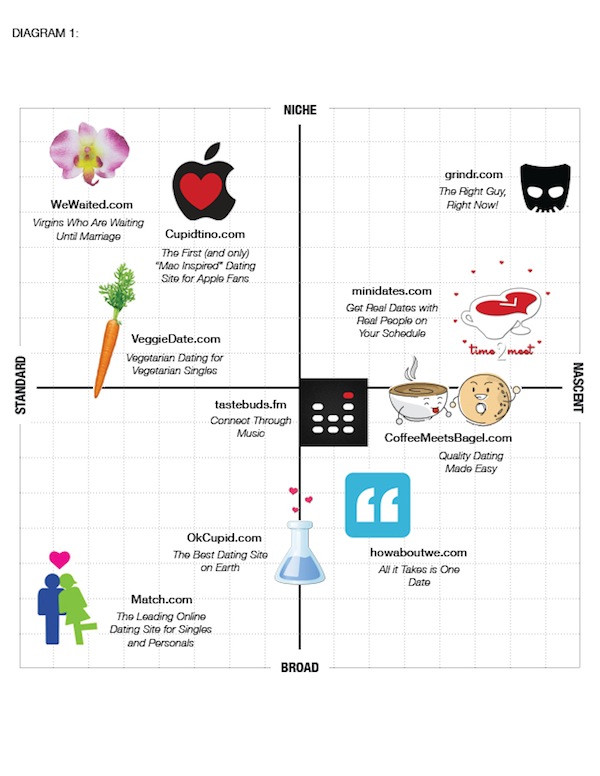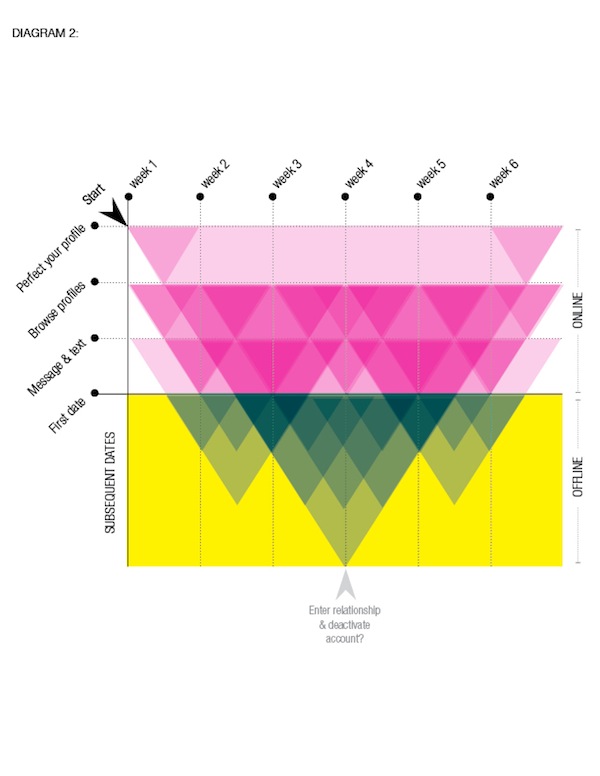For those seeking the “happily ever after” of coupledom, the question isn’t whether or not to date online, but how.
If the user believes what he or she sees in popular media, this might seem rather easy: you sign up, make a profile, and find your soul mate. That’s the simplistic experience dating sites would like you to believe exists.
However, despite the claims these websites make, not even science has solved how love really works, which makes the experience of looking for it in a digital setting very complex, indeed.
The Business of Love
We tend to have a hopelessly romantic view of courtship. Movies teach us that love begins with a meet-cute and ends with a storybook proposal. But, in real life, dating rarely plays out so romantically.
This is especially true of online dating because even though the purpose of these sites is to help people find love, the bigger purpose is to thrive as a business: an activity that is driven by metrics like revenue growth and acquisition targets. The delight a user feels receiving a message from a cute stranger hardly feels serendipitous when the website requires you to pay up before writing Mr. Maybe back.
Picking your Poison
Online dating is a billion-dollar industry with countless offerings, and the easiest part is picking one or five services to join. Are you a vegan purist looking for someone that also eschews honey? A virgin lad seeking your ingénue? An Apple elitist searching for a fellow “Macheart?” See VegDates, WeWaited, and Cupidtino, respectively. With the trend of targeted content on the rise, niche sites like these that cater to highly specific needs are increasingly dotting up across the Web.
Needless to say, not everyone has exacting requirements. For the less particular or those simply seeking towards the middle of the curve, broad sites offer a varied user base, with up to millions of unique visitors per month at popular sites such as Match.com.
The Profile Debate
Regardless of which site you choose, one thing is certain: the profile. You can love it or hate it but you cannot leave it. The profile is the rite of passage into the online dating, serving as a vehicle for self-presentation, self-promotion, and, like it or not, snap judgment. It amusingly parallels fashion in these ways, especially when you consider that most dating sites are programmed to surface profiles based on recency. The more current the profile, the more views the user gets.
Some sites offer extensive profiles and filling them out can feel like a deep dive into self-discovery (OkCupid wants me to explain, “What I’m doing with my life.” Hmm … living it?). Others are content with a few pithy tweet-like phrases.
There seems to be a quiet debate happening in the online dating industry about the profile. The traditional model of online dating—freely browsing detailed profiles—has created a phenomenon called relationshopping, where users look for love online the same way they shop for flatscreen TVs: assessing and comparing based on searchable attributes. The issue here is that the kinds of attributes that are the basis of successful relationships, such as disposition or humor, can’t be captured by a profile, placed into a database, and searched. These attributes need to be experienced in real life.
Because profiles are unreliable references for compatibility, the person you meet rarely matches who you were expecting. If we lived in an exceptionally humble society this variance might work in everyone’s favor as first dates would go better than expected. Unfortunately, the opposite usually happens. Dating is complicated enough without the added layer of deconstructing carefully crafted profiles.
For nascent sites, this is reason enough to forego the bloated profile along with the “indecision, ambivalence, and fear of commitment that relationshopping fosters” (Finkel et al., 2012, p.34) in favor of something short and easily scanned. Coffee Meets Bagel takes “the hassle out of online dating” by eliminating the work of browsing profiles altogether. Instead, users receive one match everyday at noon, which they can like or pass. No profile browsing, no relationshopping. What could go wrong?
As it turns out, there’s not enough information to get a good enough feel for the other user to know if a date will be worthwhile. The profile is a double-edged sword. Too big and we might be deluding ourselves with skewed or inflated expectations. Too scant and the date may not even happen. Being smitten with a profile is risky, but lack of content limits users’ emotional responses to snap judgments, ending the game before it’s even started.
Working the Site, Working the App
Once your profile is complete—no doubt with the optimum blend of wit and reverie, sarcasm and sincerity—it’s time to start online dating. What does this mean? Usually, answering match questions so that the match algorithm can tell you what percentage match, friends, and enemies you are with other users; writing explanations to some of your match question answers so that people don’t get the wrong idea; browsing profiles (and wondering why the photo tab isn’t first); bookmarking profiles; rating profiles; sending winks; sending messages; sending instant messages; receiving messages; ignoring canned messages; writing back; updating your profile; “updating” your profile with inane changes so that it gets surfaced on other people’s pages; letting the site suggest matches for you; looking at everyone that looked at you; setting your local broadcast so that users nearby can see you; and thinking about upgrading because you’re tired of seeing ads and you’re tempted to browse anonymously. Whew! And what happens after all that? Well, hopefully a lot of dates.
Emerging Trends
If that seems like a lot of work, emerging dating sites agree. Lately, the pattern is to mimic real life, which, given the baseless nature of matching algorithms, is not a bad idea. Hitch.me pairs users with friends of friends or colleagues. OkCupid introduced Events not long ago, which is not a group date but more like, “an instant party where you’re guaranteed to have high matches in the room,” and recently, Crazy Blind Date app, which is “the easiest and fastest way to go on dates.” Crazy Blind Date scrambles users’ photos and encourages spontaneity by offering the ability to set dates when you’re free, at locations you prefer.
But, these sites are still missing the point. Adopting a model of behavior that was established before the ubiquity of the Internet will eventually become irrelevant. Perhaps there was a time when online dating was: browse, meet, deactivate, and live happily ever after. Today, online dating is: browse, browse, meet, browse, meet, meet, meet, browse, meet, repeat. It’s a lifestyle.
When the Internet was young, people went “on the Internet” and then came back “off the Internet.” Now, nomophobia—the fear of losing a mobile phone—is a real condition. Online dating is evolving along this path, where the future is not to date online or go on Internet dates but for online dating to be integrated seamlessly into our natural behaviors and into the technologies we already use.
The Future of Online Dating
Technology is changing the way we date. Instagram is not an online dating app, but dating happens there because it’s social. Your photo set acts as a profile of sorts reflecting your taste, environment, and social habits, created naturally and effortlessly over a course of time. Facebook is also not a dating site but Graph Search makes it easier than ever to use it for such purposes.
The point is, the future of online dating is not online dating. As the apps we use become better at connecting us to those nearby, geographically and socially, online dating won’t be a discrete activity done on dating sites but instead will happen everywhere, all the time, subtly and naturally.
Illustration of bored couple courtesy Shutterstock









